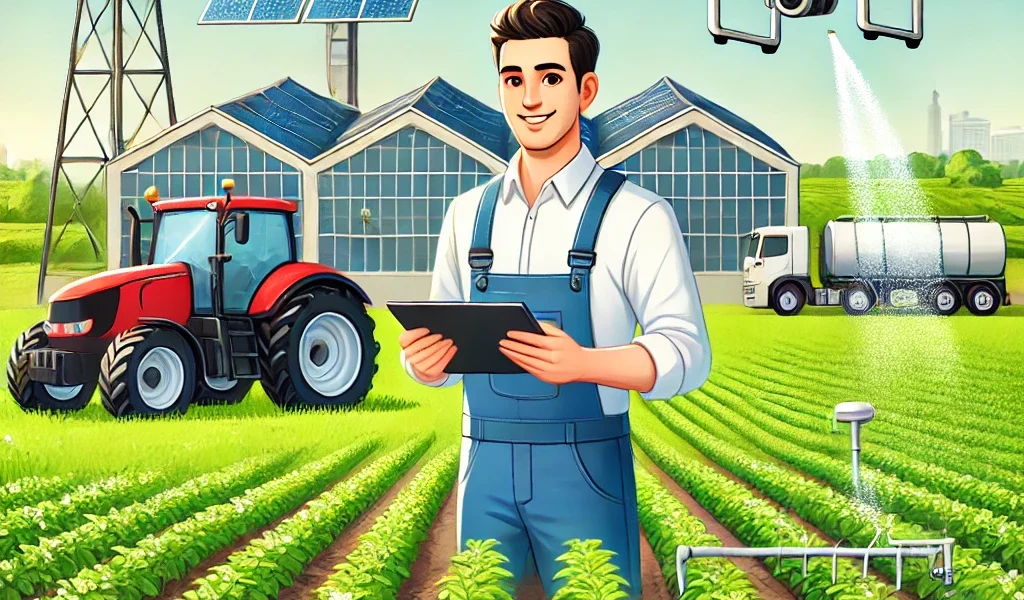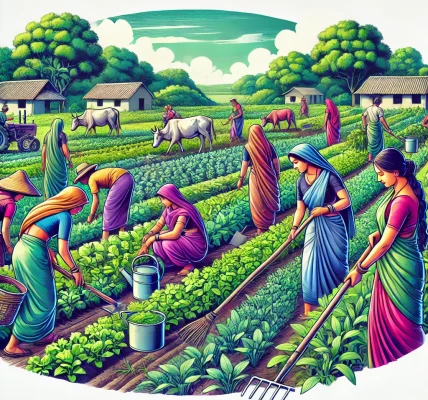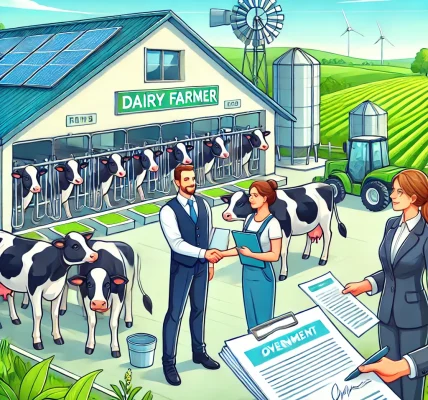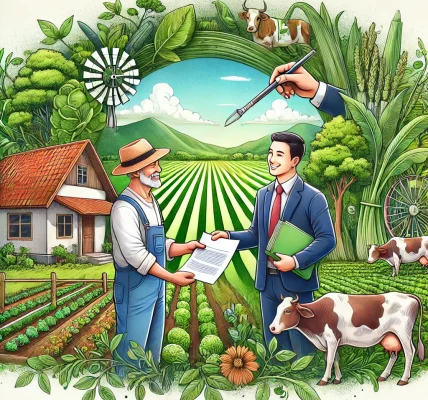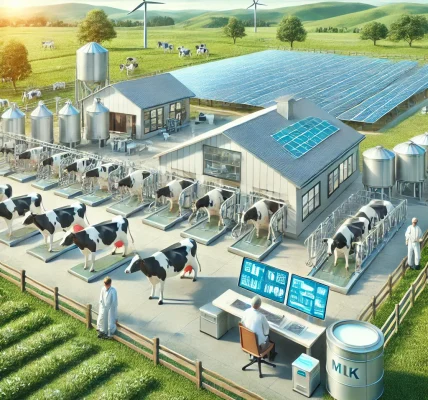Introduction
Agriculture is the backbone of many economies, and ensuring its sustainability is crucial for food security and economic growth. However, modern farming comes with its own set of challenges—rising input costs, unpredictable weather, and fluctuating market prices. To address these issues, governments worldwide offer subsidies to help farmers adopt better technology, reduce costs, and enhance productivity.
In this article, we will explore how government subsidies are transforming modern farming practices, the types of subsidies available, and how farmers can leverage them to improve their agricultural output.
What Are Government Subsidies in Agriculture?
Government subsidies are financial aids provided to farmers to support agricultural production and sustainability. These subsidies come in various forms, including:
- Direct Cash Benefits: Payments made directly to farmers to support crop production.
- Input Subsidies: Reduced prices on fertilizers, seeds, and pesticides.
- Machinery and Equipment Grants: Assistance in purchasing modern farming tools.
- Irrigation and Water Conservation Support: Subsidies for efficient water management systems.
- Crop Insurance and Risk Mitigation: Protection against losses due to natural calamities.
How Government Subsidies Are Transforming Farming
1. Encouraging Sustainable Farming Practices
Many government subsidies promote sustainable agriculture by:
- Supporting organic farming through grants for bio-fertilizers and composting.
- Encouraging water-efficient irrigation systems like drip irrigation and sprinklers.
- Offering subsidies for renewable energy adoption, such as solar-powered pumps.
For example, in India, the Paramparagat Krishi Vikas Yojana (PKVY) provides financial support to farmers shifting to organic farming, reducing dependence on chemical fertilizers.
2. Adoption of Advanced Agricultural Technology
Modern farming relies heavily on technology to boost efficiency. Governments provide financial assistance for:
- Precision agriculture tools like GPS-enabled tractors and drones.
- Soil testing kits to optimize fertilizer use.
- Automated irrigation systems that minimize water wastage.
In the United States, the Environmental Quality Incentives Program (EQIP) helps farmers implement smart farming techniques to enhance productivity.
3. Making Farm Mechanization Affordable
Mechanization is a game-changer in modern agriculture, but the high cost of machinery is a barrier for small and medium farmers. To address this, many governments offer:
- Subsidies on tractors, harvesters, and plows.
- Financial aid for rental services of farm equipment.
The Sub-Mission on Agricultural Mechanization (SMAM) in India, for instance, provides up to 50% subsidy on agricultural machinery, enabling small farmers to access modern tools.
4. Strengthening Rural Infrastructure
A strong agricultural sector requires well-developed infrastructure. Government subsidies contribute to:
- Building cold storage facilities to reduce post-harvest losses.
- Developing rural roads and transportation to improve market access.
- Investing in warehouse receipt systems, allowing farmers to store produce and sell at the right time.
The Pradhan Mantri Kisan Sampada Yojana (PMKSY) in India supports agro-processing and rural infrastructure development, reducing wastage and increasing farmer profits.
5. Reducing Financial Risks Through Crop Insurance
Farming is highly dependent on weather conditions and market fluctuations. To protect farmers, governments provide:
- Subsidized crop insurance to safeguard against droughts, floods, and pest attacks.
- Compensation for crop failure due to natural disasters.
The Pradhan Mantri Fasal Bima Yojana (PMFBY) in India covers farmers’ losses due to unpredictable weather at nominal premium rates.
6. Improving Farmers’ Income Through Direct Benefit Transfers (DBT)
Several governments have moved towards Direct Benefit Transfers (DBT), ensuring that subsidies reach farmers directly without intermediaries. This system:
- Reduces corruption and delays in subsidy distribution.
- Ensures timely financial assistance to purchase seeds, fertilizers, and machinery.
A notable example is the PM Kisan Samman Nidhi (PM-Kisan) scheme in India, which provides ₹6,000 annually to small and marginal farmers.
How Farmers Can Apply for Government Subsidies
Step 1: Identify the Right Subsidy Scheme
Farmers should check government portals or visit local agricultural offices to find relevant schemes. Websites such as agricoop.nic.in and nabard.org provide updated lists of subsidies.
Step 2: Gather Necessary Documents
Common documents required include:
- Identity proof (Aadhaar Card, Voter ID, PAN Card)
- Land ownership records
- Bank account details
- Farming activity proof (crop details, business plans for agribusiness loans)
Step 3: Submit Application Online or Offline
- Many governments provide online portals for quick registration.
- Offline applications can be submitted at designated agricultural banks or cooperative offices.
Step 4: Follow Up on the Application
- Track the application status through government websites.
- Respond promptly to additional document requests.
- Ensure timely compliance to receive the benefits.
Common Mistakes to Avoid While Applying for Subsidies
- Incomplete Documentation – Missing papers can lead to delays or rejection.
- Applying Through Unverified Agents – Always use government-verified sources.
- Lack of Awareness – Farmers should stay updated on new schemes to maximize benefits.
- Misuse of Subsidies – Funds should only be used for the intended purpose.
- Ignoring Deadlines – Many subsidies have strict application deadlines.
Legal Disclaimer & Safety Tips
To ensure legal compliance and avoid fraud:
- Apply only through official government portals and designated offices.
- Never pay unauthorized agents claiming to provide subsidies.
- Keep copies of all submitted documents for future reference.
- Beware of phishing scams – Government agencies do not ask for personal details via calls or emails.
- Read the terms & conditions carefully before accepting subsidies.
Conclusion
Government subsidies play a crucial role in transforming modern farming practices, making agriculture more efficient, profitable, and sustainable. By leveraging these financial aids, farmers can adopt better technology, protect their crops from risks, and improve overall productivity.
To make the most of these opportunities, farmers should stay informed about new schemes, apply through official channels, and ensure compliance with subsidy terms.
For the latest updates on agricultural subsidies, visit government websites or contact your local agricultural extension office.
